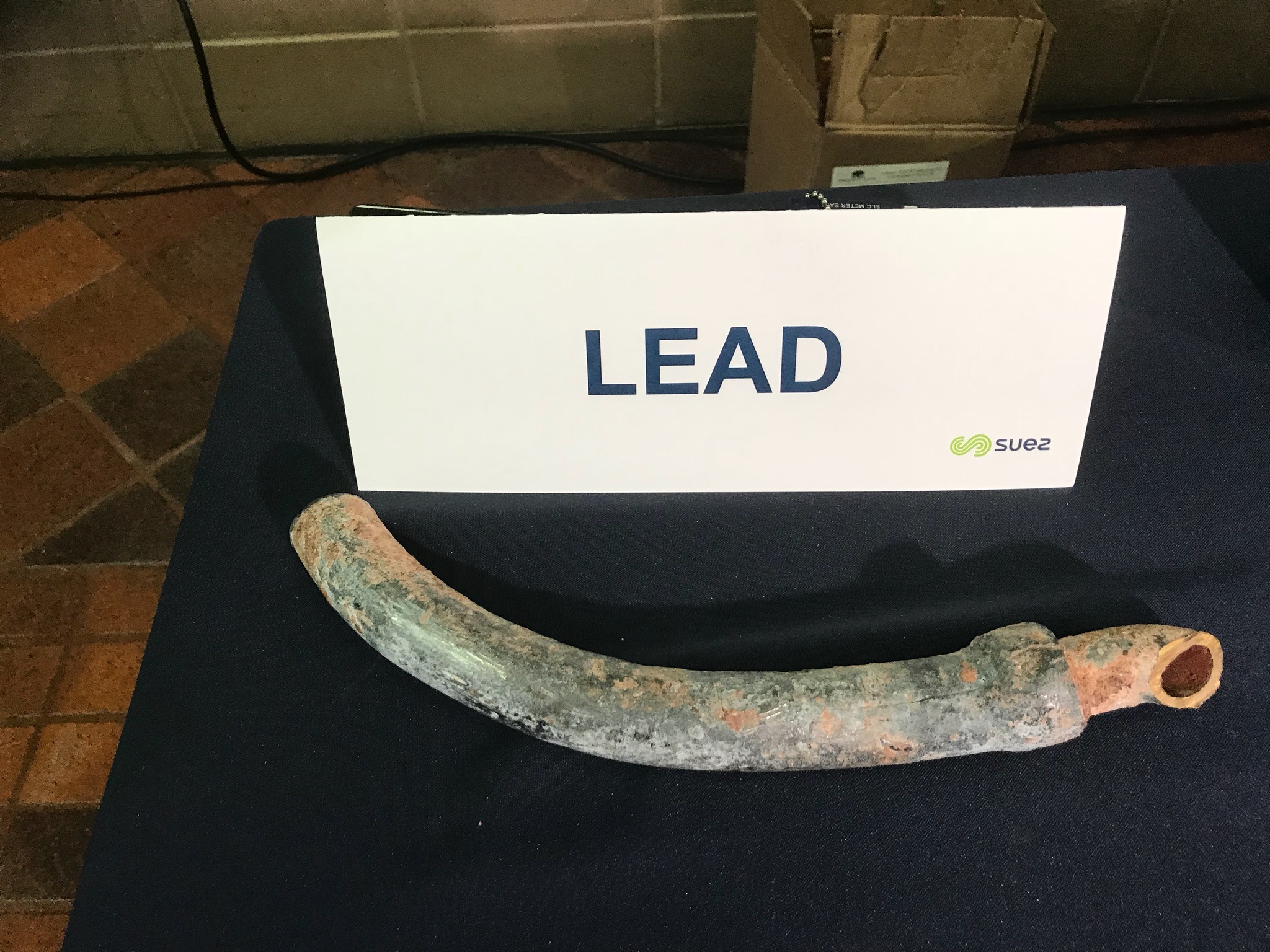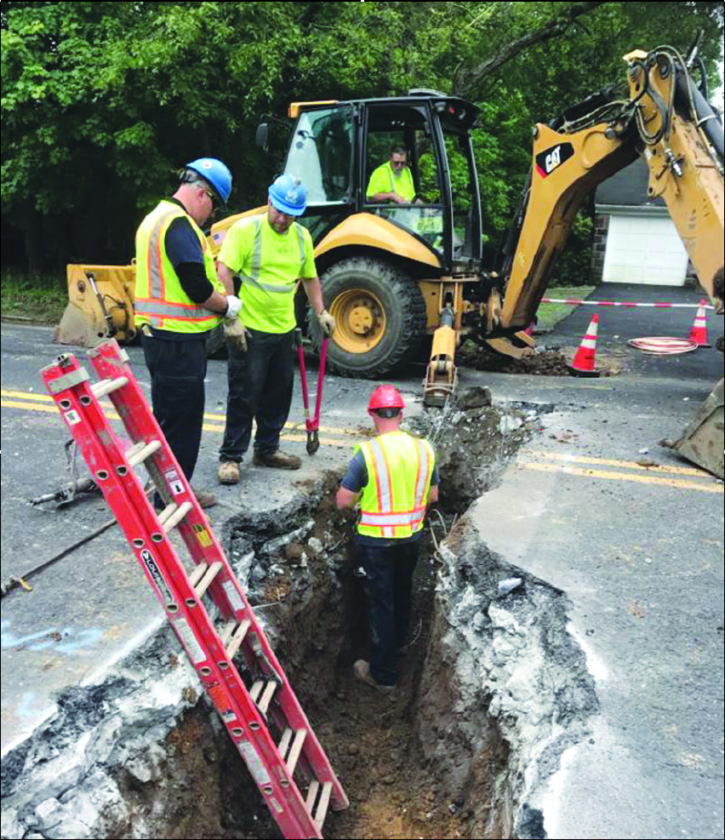
PASCACK VALLEY AREA. N.J.—A handful of Suez customers and public officials showed up Jan. 21 in Hackensack at an administrative law hearing to oppose a surcharge of up to 85 cents per month on 200,000 customer bills as part of a proposed plan to cover its costs—and earn a profit—to replace customers’ lead service lines.
The hearing, directed by Office of Administrative Law Judge Jacob Gertsman, offered opportunities for public input at 4:30 and 5:30 p.m.
Held at One Bergen County Plaza, it was attended by five customers including two municipal officials: councilwomen from Westwood and Tenafly, who said they were speaking as Suez customers and not on behalf of their boroughs.
The hearing was part of a formal process initiated in March 2019 when Suez North America filed a petition to begin a two-year pilot program to remove customer lead service lines in hopes of eliminating lead in its system.
The proposed plan would charge a customer $1,000 to replace their lead line, running from the curb into the home or business.
Suez owns the water pipe (i.e. service line) from the main in the center of street to the curb; the customer owns the service line from the curb into their home or business.
Following legal motions in the case between Suez and the state Division of Rate Counsel, which represents ratepayers, Gertsman likely will hold a hearing and issue a decision on the matter, which will then go to the state Board of Public Utilities.
A final decision on a replacement program may occur in late spring or summer, said attorneys.
2,500-plus lines replaced
Earlier in 2019, after reporting elevated lead levels in nearly 15 percent of samples from late 2018, the utility initiated its own $22 million expedited lead service line replacement effort that replaced 2,517 lead lines and connectors. Suez said it plans to replace over 2,000 more of its lead lines and connectors this year.
This month, the utility reported lead level readings that averaged 11.2 parts per billion over sampling done June through December last year, which are below the federal 15 parts per billion drinking water standard.
Lead in drinking water is shown to cause cognitive decline and impairment, especially in children.
Opposed to surcharge
All speakers opposed the proposed surcharge as unfair and unnecessary, several noting they already replaced lead service lines at their own expense. One wondered whether he was entitled to reimbursement for work already done, and two other customers noted they had replaced lead lines at costs $4,500–$5,000.
Christine Juarez, an attorney representing the Division of Rate Counsel, which represents ratepayers statewide in utility matters, urged customers to provide input on Suez’s plan.
On Jan. 10, Rate Counsel submitted a legal motion to Gertsman to dismiss the Suez proposal on grounds that the customer lead service line replacement plan violates well-established state law that prevent private utilities from going onto private property to perform work.
They also opposed the utility from doing such work and making a profit, which Rate Counsel notes sets a bad precedent for future private utilities’ work on private property.
In a related matter, Gov. Phil Murphy signed a law to allow public utilities (Suez is not public) to access private property to replace lead lines if a municipality passes an ordinance to permit such access.
That measure was based largely on an emergency lead water crisis in Newark last summer.
Mark Fino, a Hasbrouck Heights resident, said he replaced his lead line and wondered if he was entitled to any money back. He did not receive a response from Suez officials.
Longtime Tenafly resident Richard White said he spent $4,925 to have his lead service line replaced due to leaks and said he should not be forced to pay an extra 85 cents per month on his water bill.
White, a 54-year Tenafly resident, said the Suez surcharge “was not fair for people like me who have already done it.”
Westwood resident Joan Vieni said it cost her $4,500 to replace her lead service line and she did not want to pay any additional monthly charge. She stated that she “still has lead in my water” after replacing the lead line. She did not publicly state the lead levels found.
Westwood resident Erin Collins, also a councilwoman, made a brief comment opposing the rate increase.
She said was representing herself and not the council. She told a reporter later that she planned to bring up the matter at that night’s council meeting.
Tenafly councilwoman Lauren Dayton, also speaking in an informal capacity, charged that Suez has taken “no ownership or responsibility” for providing up-to-date information to the public about where lead service lines are, what work has occurred and where.
Dayton has previously criticized the utility at Tenafly council meetings for refusing to provide what she believes is public information about lead lines.
“We’re not getting full disclosure,” Dayton complained at the hearing.
She later said she and Tenafly Mayor Mark Zinna met earlier that day with Suez officials who “refused” to provide information on the utility’s lead lines in Tenafly.
She said she has not been informed by Suez about lead level sampling done or underway in Tenafly.
Public or private data?
Between breaks in the hearing, Suez officials, including spokeswoman Debra Vial, said the location of homeowners’ lead lines—at least those they are aware of—are confidential and not public information.
Suez officials said a state law prevented them from releasing information about the utility’s known lead line locations.
However, when asked later, Suez attorney Stephen Genzer said he had not looked at any privacy issues related to disclosure of where lead lines are located and would look further into the matter.
He said he could not cite a specific law that prohibited disclosure of utility data on lead lines or data on customer lead lines.
Genzer said a monthly report is provided to the state environmental department that provides numbers of known lead pipes owned by Suez or customers. He said the data does not provide town-by-town lead pipe breakdowns. Dayton said that could be easily done if Suez wanted to.
Also during the break, Eric Vitale, Suez large projects and lead program manager, said the utility would dig 21 random test pits at locations around Tenafly—and in 23 of 57 towns served—to get data for a statistical, scientific analysis of when customer lead lines might likely be suspected to be lead.
Vitale said twice to Dayton that “privacy laws” prevent Suez from revealing information about which utility and customer lines are lead.
He said that the homeowner or customer may not want others to know that information or that they may not wish to replace the lead line if the home or business was being sold.
Dayton told Genzer that she was told by state Department of Environmental Protection (NJDEP) that Suez could release data on known lead pipes owned by the utility and customers but then Suez says that NJDEP says that data cannot be released.
2% interested

Vial told Pascack Press earlier that of 1,000 customers contacted by Suez due to known lead on the customer side “only 2% agreed to consider [replacement]” due to an estimated $3,000–$5,000 cost or more.
If a customer wishes to replace their line, Vial said the utility works to help secure a plumber to do the work in concert with Suez’s replacement work.
She said generally Suez does not replace its lines when it knows a customer’s line is lead unless that customer also agrees to replace their line.
Lead levels often rise if only one side of a lead service line is replaced, Vial said.
“People find the expense above what they are willing to pay,” she said, noting the need for a lower-cost replacement program.
On Jan. 23, Vial sent Pascack Press current data on known and unknown lead service lines for its 200,000 customers.
Suez estimates 5,491 known utility owned lead service lines, 17,248 suspected goosenecks or “connectors” between mains and customer lines, and 1,469 unknown service lines.
As for customer lines, Suez reports 134,000 lines have no lead, 4,577 service lines have lead, and 2,087 of the 4,577 lines only have lead on the customer side and not utility side.
Also, Vial said 68,000 lines are to be determined.
